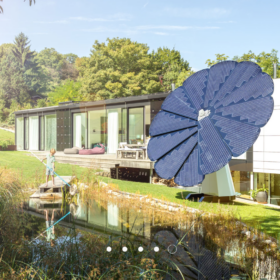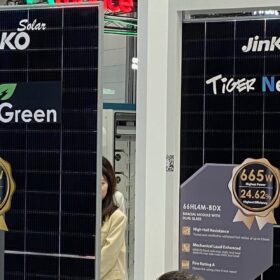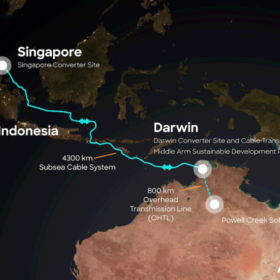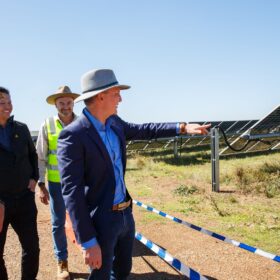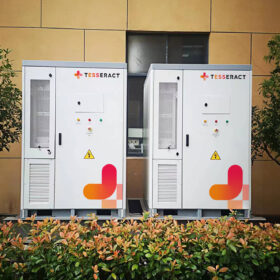Larger, thinner… and weaker?
With hailstorms in Australia and the United States severely damaging solar arrays – including “golf-ball sized” hail at the 350 MW Fighting Jays project in Texas in March 2024 – insurers are raising premiums and reducing or canceling hail coverage. Everoze Partner Simon Mason discusses the challenges the industry faces in minimising its hail risk exposure.
Australia’s flat solar market sees it dropped from global top 10
While Australia continues to be a revelatory solar market internationally, it lost its place in the top 10 solar installers globally in 2023, the IEA PVPS team reports. According to Renate Egan, Executive Director for the Australian Centre for Advanced Photovoltaics, it is the first time in 30 years Australia has dropped off that list. “What’s sad is that the rest of the world is now taking off and investing in solar and we’re falling behind,” she said at Melbourne’s All Energy on Thursday.
Nature inspires 2.5 kW Smartflower mobile solar system
New South Wales-headquartered critical power specialists Abundant Power Solutions has introduced the Austrian-made 2.5 kW Smartflower mobile solar system to Australia.
Manilla Solar project, aiming to be Australia’s largest crowd-funded solar farm, seeks investors
The 4.6 MW Manilla Solar project in New South Wales is continuing its ambition of becoming Australia’s largest community-funded solar farm, inviting locals and national investors to contribute to its latest crowd raise, opening October 26.
Largest solar farm in Victoria begins construction
Engie has broken ground on its 250 MW Goorambat East solar farm, with Victorian minister for climate action, energy and resources, Lily D’Ambrosio, attending the event. The solar farm, Victoria’s largest under construction, is expected to be operational by 2026.
JinkoSolar announces new TOPCon solar modules with efficiency of 24.8%
Chinese manufacturer JinkoSolar has used the All Energy Australia 2024 exhibition and conference being staged in Melbourne to launch its next generation Tiger Neo 3.0 modules that are available in two series with power outputs of 495 W and 670 W.
All Energy audience hears ‘superpower’ ambitions are achievable
The time for Australia to pursue its renewable energy ‘superpower’ ambitions is now with an audience at All Energy 2024 told the policy settings, regulatory rigor, and support are in place to enable a strong clean energy future.
SunCable secures another green light in quest to transport 1.75 GW via subsea electric cables
Singaporean authorities have granted conditional approval to SunCable’s flagship AustraliaAsia PowerLink, with SunCable’s interim CEO describing the win as a “vote of confidence in the commercial and technical viability of our project.”
Market brief for upped federal renewable tenders with 16 GWh of storage released
The federal government has announced it will double the amount of storage projects being sought in the next found of tenders for its Capacity Investment Scheme, upping it from 2 GW / 8 GWh to 4 GW / 16 GWh. The solar and wind tenders have also been increased, moving from 4 GW to 6 GW.
Storage and solar ‘as-a-service’ venture hits Australia’s C&I segment
Founder and former CEO of SwitchDin Dr Andrew Mears is launching his new venture, Tesseract ESS, at Melbourne’s All Energy today. The proposition expands on his previous technologies to deliver a ‘storage-as-a-service’ model focused on Australia’s C&I segment, providing battery and solar systems at $0 CAPEX to Australian farmers, manufacturers and other businesses. Pv magazine Australia spoke to Mears ahead of the launch.


